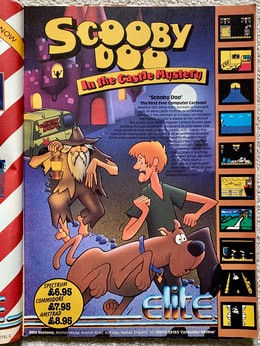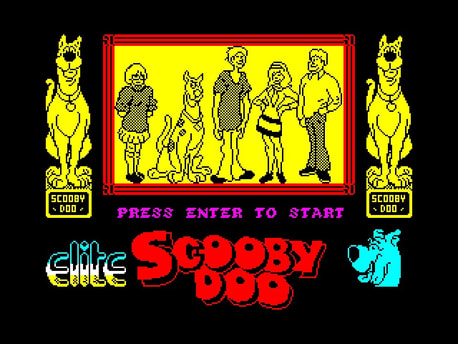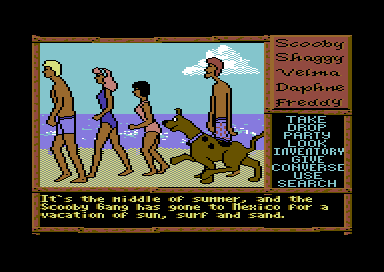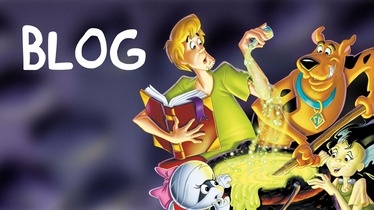|
Prior to a couple of weeks ago, I was completely unaware of the rich and complicated history that surrounded the making of Scooby-Doo's early video games. While Scooby-Doo's Maze Chase had a relatively swift and uncomplicated release as far as we know, the next several Scooby-Doo video games in 1986-1991 faced a number of development problems. Although Scooby-Doo and the Castle Mystery survived the tumultuous development process, it was originally going to be a completely different game. Not only this, but there was originally going to be a game in between 1986's Castle Mystery and 1991's Scooby and Scrappy-Doo, but it never saw the light of day. Join me in the following article, as I share the complicated history of the early era of Scooby-Doo video games. According to Games That Weren't, Scooby-Doo and the Castle Mystery was originally going to be an 8-bit Laserdisc game set for release in 1986 released by Elite Games, and the entire gang was supposed to appear in the game. There would have text-based descriptive cutaway scenes in between the game's eight action scenes, as well as sound effects to correspond with the characters' actions. This all likely sounds very normal now, but at the time, the concept was something that hadn't ever been seen before on a 8-bit game. A lot of research was done into developing this ambitious concept for a game. Programmers consulted the current animators and artists of the Scooby-Doo series at the time, in order to ensure that the animations would be as accurate as possible. The game was originally announced in autumn 1985 in Computer and Video Games Magazine. The advertisement originally detailed a mystery advertised as "the first ever computer cartoon" featuring a shark, and the Miner 49er on the cover. An October 1985 date was originally announced. Here was the original description of the game, courtesy of RetroArcadia: Whether he's being hotly pursued at midnight over an eerie castle rooftop, or scrabbling around in the darkness of a creepy old dungeon the hapless Scooby is always at the centre of the action. In his first computer cartoon, Scooby goes hurtling through underground caverns in a run-away coal truck and finds that even a leisurely paddle with Shaggy in a rickety old rowing boat can turn out to be an unofficial attempt at the waterspeed record when he's pursued by an angry shark! Scooby-Doo: The Computer Cartoon contains over 100 sometimes creepy, often crazy scenes of startling animated action! We think it's going to start a whole new craze in computer games! What do you say, Scooby? Scooby Dooby Doo! The October 1985 obviously never ended up happening, and developers took on a more ambitious mindset with the game. No announcement of the postponement was ever made, except an indirect one when a "programmers wanted" advertisement was published in the January 1986 issue of Computer and Video Games Magazine, on the same page as a picture of the Scooby-Doo in the Castle Mystery game. In February 1986, Computer and Video Games magazine published an exclusive interview with Steve Wilcox, who worked for Elite, directly saying "Despite what you’ve read in other magazines, Elite still plans to release its cartoon computer adventure, Scooby Doo in the Castle Mystery, for the 48K Spectrum." Wilcox announced the game would be coming out finally in April, but it would be "different" than what was announced in October 1985. The issue also advertised a competition in which 50 free copies of the game would be given away with release, along with a free Scooby t-shirt and poster. We also learn the writer of the advertisement apparently loved alliteration, as the game was advertised with the tagline "a marvellous mystery with creepy and crazy scenes." In April 1986, the game never released, and there was silence from Elite Games. After eight months of waiting, a random announcement was placed in the December 1986 issue of Computer and Video Games Magazine saying "after months of development, it's finally here!" The reason for the delays eventually surfaced: the developers were facing significant issues carrying out their ambitious plan of "the first animated computer game." The animations were bare-bones and not nearly as robust as was originally planned. For those who haven't played the original game, here is how the final animations turned out: Scooby-Doo in the Castle Mystery wasn't the only abandoned game in the franchise, though! What would have been the second Scooby-Doo video game in 1989 was entirely abandoned! Microillusions Gaming had made plans to put out a game simply called Scooby-Doo for the Commodore 64. Microillusions had recently struck a deal with Hanna-Barbera to make video game adaptions of their most popular cartoons. However, that deal came to a halt when they released The Jetsons game...without getting Hanna-Barbera's approval first. Hanna-Barbera cut all ties with Microillusions and ended the contract with the company, which caused Microillusions to go bankrupt. The game would have featured Scooby trying to solve four different mysteries of an Sea Aztec God, Ski Village, Haunted Mansion, and Ghost Town. The first three levels were completed and were leaked online in 2014 by one of the game's developers, but Microillusions had just begun work on the Ghost Town level when Hanna-Barbera ended the contract, so it was never completed. Here's an image of the main menu courtesy of Games That Weren't. While the actual third video game, Scooby and Scrappy-Doo, didn't face the complications that Castle Mystery and Scooby-Doo (1989) did, it was originally not going to be a Scooby-Doo game! The original game was going to feature a rat named Stig as the main character, but he was replaced with Scrappy. You can enter a cheat code to play as the original character, Stig the Rat, according to StrategyWiki. This wasn't the only game where there was an original concept before Scooby was attached - our first Scooby-Doo video game, Scooby-Doo's Maze Chase, originally also featured different main characters that were mice! The Three Blond Mice were originally going to be the main characters, but the company didn't feel the game would sell well enough on its own, so the game was redesigned at the last minute to include Scooby.
I had no idea what a complicated history this early era of Scooby games had, but it was really interesting researching these! I had a lot of fun putting this article together. A big thank you to Juan for suggesting this article idea!
9 Comments
Becker
1/2/2024 09:06:05 am
I never knew there was supposed to be a 1989 game. Such a stupid mistake from the company to publish the Jetsons game without HB's approval... you'd think they'd know better.
Reply
1/2/2024 09:13:44 am
It is very odd they would do that, especially since I'd think it would be easy to have gotten their approval considering they already had a brand deal lol.
Reply
Juan
1/2/2024 10:43:11 am
Thank YOU for making the article, WV! It's great to see these kind of obscure trivia reach more people.
Reply
Carson Maitland - Smith
1/2/2024 02:45:06 pm
Hopefully the next Scooby-Doo games will have less complicated history
Reply
Matt
1/2/2024 08:51:24 pm
I actually did not know much about old Scooby Doo video games in general, very fascinating article
Reply
Grumpydrawer
1/7/2024 04:57:52 am
A very interesting article. Didn't realize there was that much to even talk about with the earliest Scooby games. Also I love the phrase Computer Cartoon, it just sounds so very dated lol.
Reply
1/7/2024 08:57:23 am
Thanks, I also always assumed that the first Scooby games had a relatively smooth development process, so it was really interesting researching how complicated it was. Yeah, "computer cartoon" is indeed a very amusing phrase lol.
Reply
Leave a Reply. |
AuthorWildwindVampire Categories
All
Archives
May 2024
|





 RSS Feed
RSS Feed
